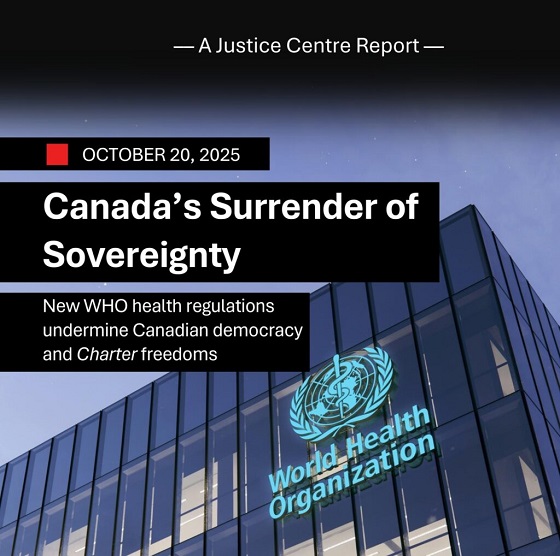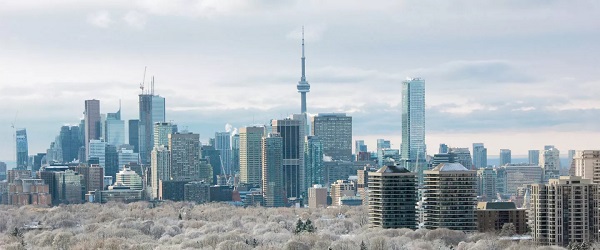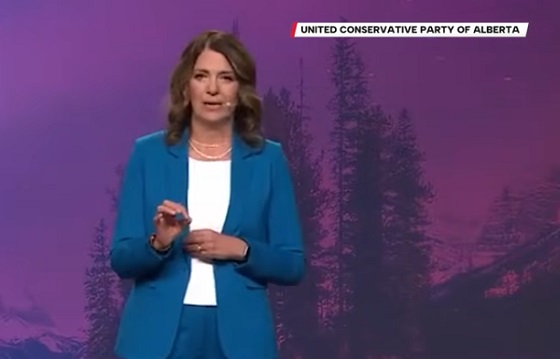Uncategorized
Watch Live: Premier Kenney declares state of emergency in Alberta

From the Province of Alberta
Strong restrictions to slow the spread of COVID-19
Alberta’s government is declaring a state of public health emergency and putting aggressive measures in place to protect the health system and reduce the rising spread of COVID-19 cases.
New public health measures
Not following mandatory restrictions could result in fines of $1,000 per ticketed offence and up to $100,000 through the courts.
Provincewide measures
Public and private gatherings
Effective immediately, mandatory restrictions on social gatherings are in effect provincewide. These measures will be in place until further notice and include:
- No indoor social gatherings are permitted in any setting, including workplaces.
- Outdoor social gatherings are limited to a maximum of 10 people.
- Funeral services and wedding ceremonies must follow all public health guidance and are limited to a maximum of 10 in-person attendees. Receptions are not permitted.
Schools
In all schools, Grades 7-12 will move to at-home learning on Nov. 30, ending in-person classes early.
- Students in early childhood services and Grades K-6 will remain learning in-person until Dec. 18.
- All students will return to at-home learning after the winter break and resume in-person learning on Jan. 11, 2021.
- These measures are mandatory.
Diploma exams are optional for the rest of the school year. Students and their families can choose whether to write the exam or receive an exemption for the April, June, and August 2021 exam sessions.
Measures for regions under enhanced status
Effective immediately, mandatory restrictions on places of worship, businesses and services are in effect in areas under enhanced status. These measures will be in place until further notice.
Places of worship
- Places of worship are limited to a maximum of one-third normal attendance per service.
- Physical distancing between households and masking are required.
- Faith-based leaders are encouraged to move services online.
- In-person faith group meetings can continue, but must maintain physical distancing and public health measures must be followed.
Businesses and services
Starting Nov. 27, business and service restrictions fall under three categories: closed for in-person business, open with restrictions, and open by appointment only. Impacts by category are available here: alberta.ca/enhanced-public-health-measures.aspx.
These measures will remain in place for three weeks, but will be extended if needed.
Albertans are encouraged to limit in-person visits to retail locations, shop local and use curbside pickup, delivery and online services, where possible.
Specific measures for Calgary, Edmonton and surrounding communities
Mandatory mask requirements
Effective immediately, a new mandatory mask requirement for indoor workplaces is in place for Edmonton, Calgary and surrounding areas. This includes any location where employees are present, and applies to visitors, including delivery personnel, and employees or contractors.
This measure will be in place until further notice.
All existing guidance and legal orders remain in place in all areas. Alberta Health, AHS and local municipalities continue to closely monitor the spread across the province.
Quick facts
- A full breakdown of the new measures can be found here.
- There are 13,349 active cases and 35,695 recovered cases in Alberta.
- There are 348 people in hospital due to COVID-19, including 66 in intensive care.
- The total number of COVID-19 deaths is 492.
- Legally, all Albertans must physically distance and isolate when sick or with symptoms.
- Good hygiene is your best protection: wash your hands regularly for at least 20 seconds, avoid touching your face, cough or sneeze into an elbow or sleeve, and dispose of tissues appropriately.
Uncategorized
Cost of bureaucracy balloons 80 per cent in 10 years: Public Accounts

The cost of the bureaucracy increased by $6 billion last year, according to newly released numbers in Public Accounts disclosures. The Canadian Taxpayers Federation is calling on Prime Minister Mark Carney to immediately shrink the bureaucracy.
“The Public Accounts show the cost of the federal bureaucracy is out of control,” said Franco Terrazzano, CTF Federal Director. “Tinkering around the edges won’t cut it, Carney needs to take urgent action to shrink the bloated federal bureaucracy.”
The federal bureaucracy cost taxpayers $71.4 billion in 2024-25, according to the Public Accounts. The cost of the federal bureaucracy increased by $6 billion, or more than nine per cent, over the last year.
The federal bureaucracy cost taxpayers $39.6 billion in 2015-16, according to the Public Accounts. That means the cost of the federal bureaucracy increased 80 per cent over the last 10 years. The government added 99,000 extra bureaucrats between 2015-16 and 2024-25.
Half of Canadians say federal services have gotten worse since 2016, despite the massive increase in the federal bureaucracy, according to a Leger poll.
Not only has the size of the bureaucracy increased, the cost of consultants, contractors and outsourcing has increased as well. The government spent $23.1 billion on “professional and special services” last year, according to the Public Accounts. That’s an 11 per cent increase over the previous year. The government’s spending on professional and special services more than doubled since 2015-16.
“Taxpayers should not be paying way more for in-house government bureaucrats and way more for outside help,” Terrazzano said. “Mere promises to find minor savings in the federal bureaucracy won’t fix Canada’s finances.
“Taxpayers need Carney to take urgent action and significantly cut the number of bureaucrats now.”
Table: Cost of bureaucracy and professional and special services, Public Accounts
| Year | Bureaucracy | Professional and special services |
|
$71,369,677,000 |
$23,145,218,000 |
|
|
$65,326,643,000 |
$20,771,477,000 |
|
|
$56,467,851,000 |
$18,591,373,000 |
|
|
$60,676,243,000 |
$17,511,078,000 |
|
|
$52,984,272,000 |
$14,720,455,000 |
|
|
$46,349,166,000 |
$13,334,341,000 |
|
|
$46,131,628,000 |
$12,940,395,000 |
|
|
$45,262,821,000 |
$12,950,619,000 |
|
|
$38,909,594,000 |
$11,910,257,000 |
|
|
$39,616,656,000 |
$11,082,974,000 |
Uncategorized
New report warns WHO health rules erode Canada’s democracy and Charter rights

The Justice Centre for Constitutional Freedoms has released a new report titled Canada’s Surrender of Sovereignty: New WHO health regulations undermine Canadian democracy and Charter freedoms. Authored by Nigel Hannaford, a veteran journalist and researcher, the report warns that Canada’s acceptance of the World Health Organization’s (WHO) revised International Health Regulations (IHR) represents a serious erosion of national independence and democratic accountability.
The IHR amendments, which took effect on September 19, 2025, authorize the WHO Director-General to declare global “health emergencies” that could require Canada to follow directives from bureaucrats in Geneva, bypassing the House of Commons and the will of Canadian voters.
The WHO regards these regulations as “binding,” despite having no ability or legal authority to impose such regulations. Even so, Canada is opting to accept the regulations as binding.
By accepting the WHO’s revised IHR, the report explains, Canada has relinquished its own control over future health crises and instead has agreed to let the WHO determine when a “pandemic emergency” exists and what Canada must do to respond to it, after which Canada must report back to the WHO.
In fact, under these International Health Regulations, the WHO could demand countries like Canada impose stringent freedom-violating health policies, such as lockdowns, vaccine mandates, or travel restrictions without debate, evidence review, or public accountability, the report explains.
Once the WHO declares a “Pandemic Emergency,” member states are obligated to implement such emergency measures “without delay” for a minimum of three months.
Importantly, following these WHO directives would undermine government accountability as politicians may hide behind international “commitments” to justify their actions as “simply following international rules,” the report warns.
Canada should instead withdraw from the revised IHR, following the example of countries like Germany, Austria, Italy, Czech Republic, and the United States. The report recommends continued international cooperation without surrendering control over domestic health policies.
Constitutional lawyer Allison Pejovic said, “[b]y treating WHO edicts as binding, the federal government has effectively placed Canadian sovereignty on loan to an unelected international body.”
“Such directives, if enforced, would likely violate Canadians’ Charter rights and freedoms,” she added.
Mr. Hannaford agreed, saying, “Canada’s health policies must be made in Canada. No free and democratic nation should outsource its emergency powers to unelected bureaucrats in Geneva.”
The Justice Centre urges Canadians to contact their Members of Parliament and demand they support withdrawing from the revised IHR to restore Canadian sovereignty and reject blind compliance with WHO directives.
-

 Daily Caller22 hours ago
Daily Caller22 hours agoTech Mogul Gives $6 Billion To 25 Million Kids To Boost Trump Investment Accounts
-

 Alberta8 hours ago
Alberta8 hours agoThis new Canada–Alberta pipeline agreement will cost you more than you think
-

 Business23 hours ago
Business23 hours agoRecent price declines don’t solve Toronto’s housing affordability crisis
-

 National21 hours ago
National21 hours agoCanada Needs an Alternative to Carney’s One Man Show
-

 Alberta2 days ago
Alberta2 days agoNew era of police accountability
-

 Automotive8 hours ago
Automotive8 hours agoPower Struggle: Governments start quietly backing away from EV mandates
-

 National2 days ago
National2 days agoMedia bound to pay the price for selling their freedom to (selectively) offend
-

 C2C Journal2 days ago
C2C Journal2 days agoLearning the Truth about “Children’s Graves” and Residential Schools is More Important than Ever





